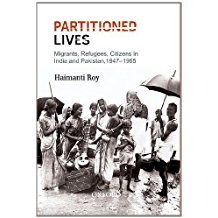Since the path-breaking work in the 1990s on women abducted during the Partition violence in divided Punjab, at least two generations of much needed scholarship have built upon and extended the literary archive of the years of trauma and displacement that followed the Partition of 1947. Drawing upon oral histories, memoirs, official records and newspapers of the time, historians have now shown us the extent to which 1947 was not the end, but rather the beginning of a long, contested and drawn-out process of nation-state formation in which the figure of the refugee was central, not marginal, to the making of India and Pakistan. Haimanti Roy’s Partitioned Lives joins other recent provincially focused studies like Neeti Nair’s Changing Homelands: Hindu Politics and the Partition of India(Harvard University Press, 2011) and Ilyas Chattha’s Partition and Locality: Violence, Migration, and Development in Gujranwala and Sialkot 1947-1961(Oxford University Press, 2011) to provide a close-up regional understanding of this process of partitioning and national formation. With its focus on Bengal, rather than Punjab, it adds to the important work of Joya Chatterjee and Willem van Schendel1, to help us think through the specificity of the Bengal experience,as a line on a map divided a complex ecology and its multi-religious communities.
October 2013, volume 37, No 10

